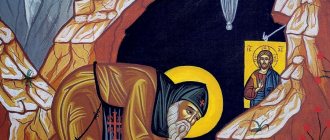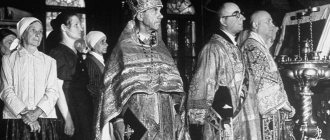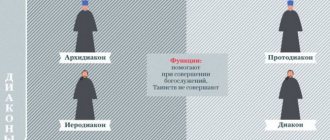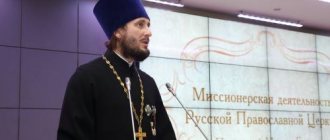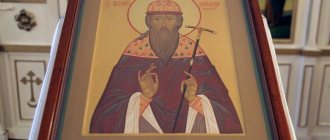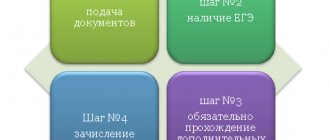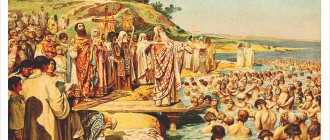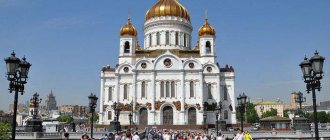In accordance with historical tradition and modern documents, a diocese means a local church, which is headed by a bishop. The diocese unites various church institutions - from farmsteads to monasteries and churches, as well as missions, brotherhoods, educational institutions, etc. The bishop in this structure occupies a dominant place on the basis of the succession of power from the holy apostles themselves, and governs it with the participation of the clergy and lay communities.
The boundaries between dioceses today often coincide with administrative boundaries. They are established by a body such as the Holy Synod. Although there are exceptions to the rules. For example, the Ukrainian Orthodox Church and the Exarchate in Belarus have more dioceses than regions in these countries.
When was the diocese in Nizhny Novgorod founded?
The Nizhny Novgorod diocese has a long and interesting history of its origin and existence. They were going to establish it back in the middle of the 17th century, when numerous Old Believers, as well as followers of Stepan Razin, began to move to the “Nizovskaya land” from the European part of the Russian Empire. This created the preconditions for the formation of hotbeds of unrest in the region, which could subsequently be turned against the state. Therefore, in 1672, to strengthen the Orthodox faith and peace, the Nizhny Novgorod Orthodox Diocese was created, headed by Archimandrite Philaret, who was the head of the Pechersky Monastery. He ruled the diocese for 10 years and sat in the Novgorod Kremlin, which began to be considered the residence of this church unit at that time.
The decision to create the Nizhny Novgorod diocese was made in 1589 at the Moscow Council
The issue of creating the department was resolved for a very long time. The decision to create the Nizhny Novgorod diocese was made back in 1589 at the Moscow Council. This decision was accelerated due to the increase in supporters of the Old Believers in the Nizovsky land. And also by the multiplication of Razins - participants in the peasant war of 1670.
March 24, 1672
The Nizhny Novgorod diocese was established
To manage this diocese, a fairly experienced and very reliable person was needed. Archimandrite Filaret of the Pechersk Ascension Monastery was chosen for this position.
He governed the diocese from July 2, 1672 to March 7, 1682. From the very beginning of the establishment of the diocese until the end of the 18th century, the residence of the bishops was located in the Kremlin, and already under Bishop Damascus the residence was moved to another new building, which was built on the territory of the abolished Ivanovo Monastery.
Since 1799, the Nizhny Novgorod and Alatyr diocese began to be called Nizhny Novgorod and Arzamas. Then the city of Arzamas was part of the Vladimir diocese, and then became part of the Nizhny Novgorod lands, but the city of Alatyr returned to the Kazan diocese. The first bishop of Nizhny Novgorod and Arzamas was Benjamin the second.
In the Nizhny Novgorod diocese, Bishop Nektary began to publish a special magazine called “Nizhny Novgorod Diocesan Gazette”. The first issue of the newspaper was published on February 5, 1864.
Bishop Nektary began to publish a special magazine called “Nizhny Novgorod Diocesan Gazette”
In 1866, the Balakhna Vicariate was created, which crossed paths in 1923 as a result of the persecution of the Orthodox Church and the spread of Renovationism.
How the Nizhny Novgorod diocese was destroyed and revived in the twentieth century
During the years of Soviet power, the diocese, renamed Gorky, was almost completely destroyed. In 1918, many simple monks, church rectors, bishops, and archpriests were shot or drowned with their hands tied in the Volga. Similar atrocities were repeated in 1938; Mochalny Island became the center of crimes against clergy. The last church of the diocese was closed just before the start of the Great Patriotic War.
However, the unfavorable situation at the fronts forced the Soviet leadership to begin the revival of the Orthodox faith already in August 1941. Then the Trinity-Vysokovskaya Church was reopened, whose parishioners donated about one million Soviet rubles for military needs. Subsequently, the number of opened and restored churches increased, and today the Nizhny Novgorod diocese includes about 220 churches, nine monasteries, almost 180 parishes and 17 deaneries (groups of parishes located close to each other).
Since 2012, the Nizhny Novgorod diocese has been part of the Nizhny Novgorod Metropolis along with the Lyskovsk, Gorodets and Vyksa dioceses by decision of the session of the Holy Synod of the Russian Orthodox Church. Since February 2003, the head of the diocese is the Metropolitan of Nizhny Novgorod and Arzamas, Bishop of the Russian Orthodox Church Georgy (Vasily Timofeevich Danilov).
Today, within the Nizhny Novgorod diocese there is one vicariate – Balakhna. Its head is the vicar, the bishop (now Ilya Bykov), who is not the ruling bishop. The remaining vicariates that were part of the diocese were abolished or became independent dioceses.
Bishops
- Filaret (2 June 1672 - 7 March 1686)
- Paul (March 7, 1686 - September 26, 1696)
- Triphyllius (Inichov) (January 17, 1697 - July 20, 1699)
- Isaiah (July 23, 1699 – June 1708)
- Sylvester (Kholmsky-Volynets) (September 14, 1708 - March 5, 1719)
- Pitirim (23 March 1719 - 8 May 1738)
- John (Dubinsky) (February 25, 1739 - September 1, 1742)
- Dimitri (Sechenov) (September 12, 1742 - August 9, 1748)
- Veniamin (Putsek-Grigorovich) (August 14, 1748 - February 28, 1753)
- Feofan (Charnutsky) (March 14, 1753 - June 1, 1773)
- Anthony (Gerasimov-Zybelin) (July 9, 1773 - April 25, 1782)
- Joasaph (Zabolotsky) (May 16, 1782 - September 22, 1783)
- Damascene (Semyonov-Rudnev) (September 22, 1783 - January 12, 1794)
- Pavel (Ponomarev) (February 12, 1794 - October 26, 1798)
- Veniamin (Krasnopevkov-Rumovsky) (October 26, 1798 - March 16, 1811)
- Moses (Gemini-Platonov) (May 28, 1811 - January 10, 1825)
- Samuil (Zapolsky-Platonov) (1825 - 1826) v/u, bishop. Kostroma
- Philip (Gumilyovsky) (mentioned on August 30, 1923) v/u, bishop. Balakhninsky
- Alexander (Pokhvalinsky) (September 26, 1929 - February 11, 1934) v/u, bishop. Bogorodsky
- Job (Kresovich) (1948) v/u, ep. Lyskovsky
- Pimen (Izvekov) (May 14 - July 7, 1966) supreme, metropolitan. Krutitsky
- Evgeny (Zhdan) (June 21, 2001 - March 12, 2002) supreme, archbishop. Tambovsky
- Theodosius (Vasnev) (October 11, 2002 - February 2, 2003) senior, bishop. Vetluzhsky, then Tambovsky
Seraphim of Sarov - the main patron of the Nizhny Novgorod lands
50 years after the start of the Great Patriotic War, in 1991, the relics of Seraphim of Sarov returned to the Diveyevo Monastery. They arrived in Moscow at the end of July and were sent in a religious procession to the Nizhny Novgorod region. This saint was protected by God from an early age. In particular, during the construction of the temple, which was carried out by his parents, he remained unharmed when he stumbled and fell from the bell tower.
Then in a dream he received healing from a serious illness and was miraculously cured of dropsy after a vision of the Mother of God, who appeared to him with two apostles and told John that Seraphim was “of our generation.”
Subsequently, Seraphim of Sarov performed many feats of prayer and healing. Some saw him standing above the ground during prayer and subsequently testified to this.
In addition to Seraphim of Sarov, more than twenty saints and many new martyrs are considered patrons of the Nizhny Novgorod land, among whom are priests killed for their faith in 1918 and 1937-38.
Another cathedral is located in Arzamas - this is the Church of the Resurrection of the Word
Another cathedral is located in Arzamas - this is the Church of the Resurrection of the Word. This temple was built in honor of the victory of the Russian people in the Great Patriotic War of 1812.
The Church of the Resurrection of the Word in Arzamas was built in honor of the victory of the Russian people in the Great Patriotic War of 1812
The design of the cathedral was carried out by Michael of Corinth. This man was a student of the architect Andrei Voronikhin. The building has the shape of a Greek cross, which is placed on a square. In appearance, this is a very large temple, which is about 30 fathoms in length and 22 fathoms in height.
In Soviet times, they wanted to blow up the temple, but due to the indignation of local residents, the temple was simply closed. The question of getting the cathedral back into operation and opening it was raised by Patriarch Sergius, a man born in the city of Arzamas.
Before his death, he talked with the chairman of the Council for the Affairs of the Russian Orthodox Church, Georgy Karpov, who asked whether it was possible to somehow speed up the process of opening the temple.
In 1947, services began to be held in the temple. Many architects said that in terms of appearance and its beautiful proportions, the temple could be on a par with St. Petersburg cathedrals.
In 2009, Patriarch Kirill visited the temple. In 2022, during the celebration of the 150th anniversary of the birth of Patriarch Sergius, Patriarch of Moscow and All Rus' Kirill performed the Divine Liturgy.
By leaving a comment, you accept the user agreement
Reconstruction of Nizhny Novgorod churches
In recent years, many churches of the Nizhny Novgorod diocese are gradually moving from decline to prosperity, and anyone can take part in this process. Currently, work is underway to reconstruct the Feodorovsky Cathedral in Gorodets, a temple and chapel in Nizhny Novgorod (on the site of the demolished Transfiguration Cathedral and in honor of St. Igor), a temple in Trans-Volga region (in honor of the Savior Trinity), and a temple of the Blessed Virgin Mary in the village of Glukhovo etc. These places of worship can be viewed during the pilgrimage.
In 2012, the Holy Synod decided to create the Nizhny Novgorod Metropolis
In 2012, the Holy Synod decided to create the Nizhny Novgorod Metropolis, which included the Nizhny Novgorod diocese and the newly created Gorodets, Lyskovsk and Vyksa dioceses. Since 2012, the Orthodox Church of Nizhny Novgorod has had the status of metropolitanate.
In 2015, there were about 600 priests in the Nizhny Novgorod region. This suggests that the clergy of the diocese was quite large. During the entire reign of the Nizhny Novgorod See, it was ruled by 48 bishops, two of whom were glorified as new martyrs.
The Nizhny Novgorod diocese has two cathedrals: one of them is in honor of Alexander Nevsky in Nizhny Novgorod, and the second is the Church of the Resurrection of the Word in Arzamas.
The Church of the Holy Blessed Prince Alexander was built according to the design of the architect Lev Dahl. This temple is the historical center of all Nizhny Novgorod.
The Alexander Nevsky Temple was built in memory of the visit to the Alexander II fair
In 1856, the fair merchants wanted to build another Orthodox church, in which Alexander the Second himself stayed. In the construction of the temple they turned to Nizhny Novgorod Bishop Anthony, who already turned to the governor of the city. The necessary funds and donations were collected.
At first, the temple was supposed to be built according to the design of the architect Robert Kilevane, but, unfortunately, it had to be redesigned because the structure was not strong enough.
13 years
construction of the cathedral continued
Construction of the cathedral began in 1868. Unfortunately, construction lasted about 13 years. In 1881, the construction of the cathedral was completed, it was consecrated in the presence of Emperor Alexander II and his wife.
This temple stood out because it did not have a permanent parish; its parishioners were merchants who came specially for the fair. That is why the temple was open only during the fair, and in winter the temple was not heated.
Only the lower part of the temple was heated - in honor of Macarius of Zheltovodsk and Unzhensky. In winter, services were held in the cathedral in the lower church.
One and two day religious excursions through the pilgrimage center
Attracting believers to churches and holy places is facilitated by the pilgrimage center of the Nizhny Novgorod diocese, which received a blessing to organize trips to holy places in the Nizhny Novgorod region, as well as other regions of Russia and abroad from Nizhny Novgorod Metropolitan George, who has headed this church unit since 2003. This organization is registered in the register of tour operators in Russia and offers about five dozen excursions of religious and ordinary directions. Among them one can highlight one-day excursions to Diveevo, to the Vysokovsky Monastery, to Murom, to Arzamas to the source of the twelve holy springs, to Suzdal, to the Holy Intercession Convent, to Kideksha, which is the oldest village founded near Suzdal even before the arrival of these lands of the Slavs. Almost all excursions are conducted by Orthodox guides and include participation in one or another church service with possible communion and confession.
In addition to one-day trips, the pilgrimage center of the Nizhny Novgorod diocese organizes two-day tours to Kazan (to the face of the Kazan Mother of God), to Optina Pustyn, Yaroslavl, Moscow, Kostroma, Serpukhov, etc. Particularly popular is a trip to Diveevo with a full range of services at the relics of St. Seraphim of Sarov and other saints and great martyrs. The program includes a tour of the Seraphim-Diveevo Convent, which is more reminiscent of a city in plan.
Temples and monasteries
Currently, there are 5 male monastic communities on the diocesan lands:
- The Annunciation Monastery, founded in the 13th century, is the oldest monastic monastery in the Nizovsky lands. It is located in Nizhny Novgorod at the confluence of the Oka and Volga rivers.
Annunciation Monastery in Nizhny Novgorod - The Ascension Pechersky Monastery, located in the cathedral center, was founded in the 30s. XIV century monk of the Kiev Pechersk Lavra Dionysius. Currently, his community consists of 15 residents. The residence of the bishop is located on the monastery territory.
- The Bogoroditsky Monastery is located in the village of Oranki. It was founded in the middle of the 16th century. The modern revival began in 1993.
- The Holy Assumption Hermitage in the city of Sarov was founded at the beginning of the 18th century. Known as the place where Saint Seraphim of Sarov performed his spiritual service.
- The Spaso-Preobrazhensky Monastery is located in the city of Arzamas. It was founded in the middle of the 16th century.
There are 10 monastic communities and more than 170 churches on the territory of the diocese. Pious Christian women can accept monastic service and work for the Glory of the Lord in the following monasteries:
- Holy Trinity Seraphim-Diveevo Monastery, located in the village of Diveevo. The world-famous monastery, considered the fourth earthly limit of the Virgin Mary, receives several hundred pilgrims every day. About 400 nuns live permanently in the community.
- Holy Cross Monastery, founded in the second half of the 18th century not far from the walls of the Nizhny Novgorod Kremlin.
- Pokrovsky Monastery, founded in 2000 in the village of Lukino.
- The Sorrowful Monastery in the village of Malaya Pitsa was founded at the beginning of the last century on the basis of a small almshouse. The modern history of the community began in 2013.
- St. Nicholas Monastery, located on Cathedral Square in the city of Arzamas. The monastery was founded at the end of the 16th century.
St. Nicholas Convent in Arzamas
The largest religious buildings of the diocese are the following churches:
- Cathedral in the name of the Holy Blessed Prince Alexander Nevsky;
- Cathedral of the Resurrection in the city of Arzamas;
- Trinity Cathedral in the village of Diveevo;
- Old Fair Cathedral in Nizhny Novgorod;
- Ascension Cathedral of the Pechersk Monastery.
Canal of the Virgin Mary and trips to the Holy Land
It is known that the plan of this religious monument was drawn by Saint Seraphim, who had never been to this place. This gives reason to believe that the monastery was planned with the blessing of the Almighty and according to His providence. According to legend, the convent was founded after the appearance of the Mother of God to Mother Alexandra, and it is considered one of the four Domains of the Mother of God on our land. The program of such a pilgrimage also includes a visit to the Canal of the Mother of God, about which Saint Seraphim said that after the coming of the Antichrist, the evil one will pass everywhere, but will not jump over this canal, since the Mother of God herself measured it with her belt.
In addition, the pilgrimage center organizes trips to holy places abroad. For example, you can visit the Holy Land during Lent, including a stay at the Greek monastery on Mount Tabor, a visit to the monastery at Nazareth, a tour of the Jordan, the Church of the Nativity, the site of the Ascension of the Lord and other holy places. The pilgrimage center has its representatives in the Holy Land and provides the opportunity to participate in Liturgies in various churches, walk the Way of the Cross, visit Bethlehem, and participate in the All-Night Vigil. Such trips usually take about a week, and the group of believers is accompanied by a priest.
Church and popular chants performed by a male choir
The Nizhny Novgorod diocese is also known for its magnificent bishop's choir. It consists of eleven people, including clergy ranging from deacons to bishops, who perform church singing works: chants, cants, prayers, etc., as well as chants and songs by modern and ancient authors and composers. The choir of the Nizhny Novgorod diocese is popular among parishioners, it gives charity performances and has already released two discs of popular church music. These chants have found acceptance even in the hearts of die-hard rockers, who admit that they have never heard sacred music performed so well. The choir often performs without the accompaniment of musical instruments.
In 1929, the Alexander Nevsky Temple was closed and all valuables were confiscated
In 1929, the temple was closed and valuables were confiscated from it. Fortunately, the parishioners still managed to save several icons that were in the temple. In 1920, a decision was made to reconstruct the fairgrounds.
But, unfortunately, this project did not include the fact that there would be a cathedral in it, so they were going to demolish it. Half of the temple was dismantled, but the building remained only for warehouses for various needs. In the 1940s, there was a fire in the temple; it was because of this that the temple building and its interior, as well as the paintings on the walls, were destroyed. In 1983, the cathedral began to be restored.
Since 1992, services began to be held on the lower floor of the temple. In 1998, Metropolitan Nicholas of Nizhny Novgorod and Arzamas illuminated the central limit of the Alexander Nevsky Church. Then 2 more limits were highlighted. Gradually the temple was restored.
In 1998, Metropolitan Nicholas of Nizhny Novgorod and Arzamas illuminated the central limit of the Alexander Nevsky Church
Work has been carried out on the interior paintings of the cathedral. In 2011, the Cathedral housed the Belt of the Blessed Virgin Mary. During this time, about 170 people came to worship the belt.
Patriarch Kirill of Moscow and All Rus' and President of the Russian Federation Dmitry Medvedev also came to venerate the belt. Gradually the temple was restored and is currently considered operational.
How a church minister should sing. Protodeacon Andrey shares his opinion
A special member of the church choir is Protodeacon of the Nizhny Novgorod diocese, Father Andrey. His powerful baritone is not inferior in the strength of sound and richness of sound shades to the legendary bass of the Russian singer Fyodor Chaliapin, and maybe even surpasses him in some way. For the first twenty-five years of his life, Father Andrei was associated with worldly music, until he visited the Annunciation Monastery, where he became acquainted with church chants. After this, he began to visit churches more often and listen to music, and, in the end, asked permission from the schema-abbot to work at the temple. A few years later he was ordained to the rank of deacon.
Protodeacon Andrei (Zheleznyakov) believes that a deacon should have experience in ministry and be able to sing, but without praising his vocal abilities, no matter how good they may be. It is believed that the priest reading the service must completely renounce earthly concerns and sing for the Creator, the Creator, who gave man both life and all his abilities. Only in this case can we speak in such a way that the meaning of the prayer will reach even those who do not know the Old Church Slavonic words. It seems that the bishop's choir of the Nizhny Novgorod diocese sings in just such a way that it attracts the flock and lay listeners. Protodeacon Andrey so shocks listeners with his voice that many want to confess and talk with him.
